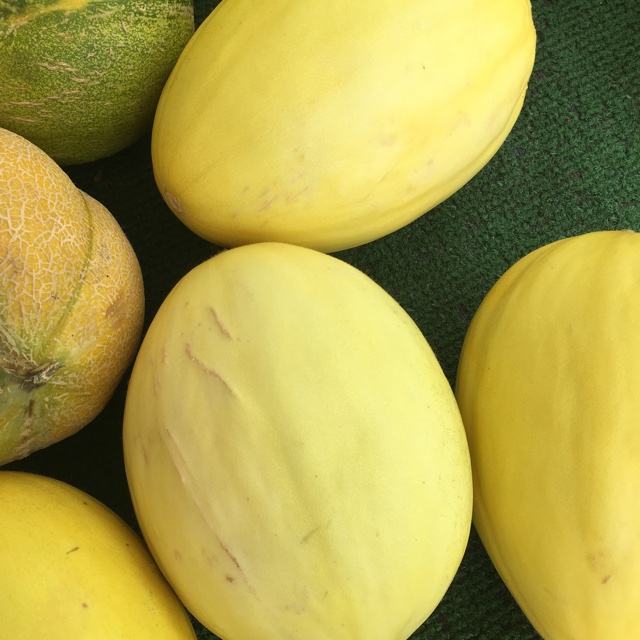
Green-fleshed, for trial: Passport F1, Rocky Sweet F1. Main season: Saticoy Hybrid, Gold Star, Roadside, Supermarket, Canada Gem, Summet, Pulsar, Eastern Star, Burpee Hybrid Improved, Harper Hybrid, Classic, Fruit Punch, Ambrosia. For trial: Earliqueen, Earlidawn, Northern Queen, Supermarket. 70 days from transplanting in the lower Columbia Basin, 75 days in the Willamette Valley) are classified as eastern types or western shipping types.Įastern type muskmelons: Round to oval, usually sutured, netted rind with sweet orange flesh, not intended for long-distance shipping Early: Superstar, Earlisweet. conomon, the Oriental pickling melon.įollowing are commonly used commercial descriptions. inodorous include casabas, crenshaws, honeydews, and the late-maturing winter melons.Ĭ. reticulatus are the netted, aromatic melons (muskmelons) and Persian melons.Ĭ. They have deeply grooved fruit with a hard, warty or scaly rind and orange or green flesh.Ĭ. cantaloupensis (true cantaloupes) are not commonly grown in the U.S.A. Photo credits: Bill Mansour, Oregon State UniversityĪlthough all melons are classified as Cucumis melo, several "botanical" or "varietal" subdivisions are recognized. Photo credit: Bill Mansour, Oregon State University

Left: (top to bottom) Honeydew, Canteloupe and Casaba. It may be sweet, aromatic, spicy, bland, or a combination of these. The flesh may be white, green, salmon pink or orange. When it occurs, netting may be rope-like and prominent or flat-surfaced, fine, and less conspicuous. The surface may be white, grayish green, golden yellow, orange or black! It may be sutured (ribbed or grooved), smooth, or netted (covered with a network of corky tissue). They may vary in length from three or four inches to more than three feet (snake cucumber-which is really a melon). Melon fruit show extreme variations from the common muskmelon, sometimes looking more like an orange, banana, or cucumber! Fruit may be oval, oblong or very long and slender. PACKET: 30 seeds, unless otherwise indicated.The currently accepted protocol is to divide all melons into two categories - melons and watermelons. DAYS TO MATURITY: From transplanting add about 10 days if direct-seeded. STORAGE: All melons should be stored at 85-95% relative humidity. See product copy for when to harvest, as there are varietal differences. Some types, like Canary and Crenshaw, require a bit more pressure to separate the fruit and are harvested at "forced slip." Others, like Honeydew, Charentais, and Piel de Sapo, are overripe by the time the stem can be tugged from the fruit these must be cut from the vine. Most cantaloupes are ready when the gray-green color begins to change to buff-yellow and are harvested at "full slip" or when a light tug separates the fruit from the vine. HARVEST: Ripeness indicators vary by melon type. INSECT PESTS: Protect against cucumber beetles with floating row covers applied at transplanting, or with insecticides such as pyrethrin or azadirachtin. Keep plants healthy with good fertility and irrigation to prevent sudden wilt. Sudden wilt (which is caused by cold weather stress in late summer when plants have a heavy set of ripening melons), can cause plants to wilt almost overnight. DISEASES: Choose varieties resistant to diseases in your area. Remove covers when plants have female flowers (identified by the tiny fruit at base of blossom). ROW COVERS: Since melons like consistently warm conditions, plastic mulch and row covers will make for earlier crops and better yields, especially in the North. DIRECT SEEDING: Sow 1-2 weeks after last frost when soil is warm, above 70☏ (21☌), 3 seeds every 18", 1/2" deep, thinning to 1 plant/cell or pot. Do not disturb roots when transplanting, and water thoroughly. Even hardened-off melon seedlings are tender. When the weather is frost-free, warm, and settled, transplant 2-3' apart in rows 6' apart or thin to 1 plant/cell or pot with scissors and transplant 18" apart. Reduce water and temperature for a week to harden-off seedlings. Handle young plants carefully and never let the soil dry out. Keep temperature 80-90☏ (27-32☌) until germination. Plant 3 seeds/cell or pot, about 1/4" deep.

TRANSPLANTING: Sow indoors in 50-cell plug trays or 2-3" biodegradable pots in late April or one month (no sooner!) before transplanting outdoors. After this point do not water the last week before fruits are ripe, as overwatering can cause bland fruit. Good soil moisture is important in early stages of growth and during pollination when fruits are setting. SCIENTIFIC NAME: Cucumis melo CULTURE: A light, well-drained soil with a pH of 7.0 and a southern exposure is ideal.


 0 kommentar(er)
0 kommentar(er)
